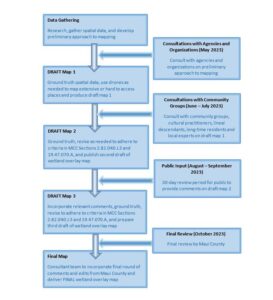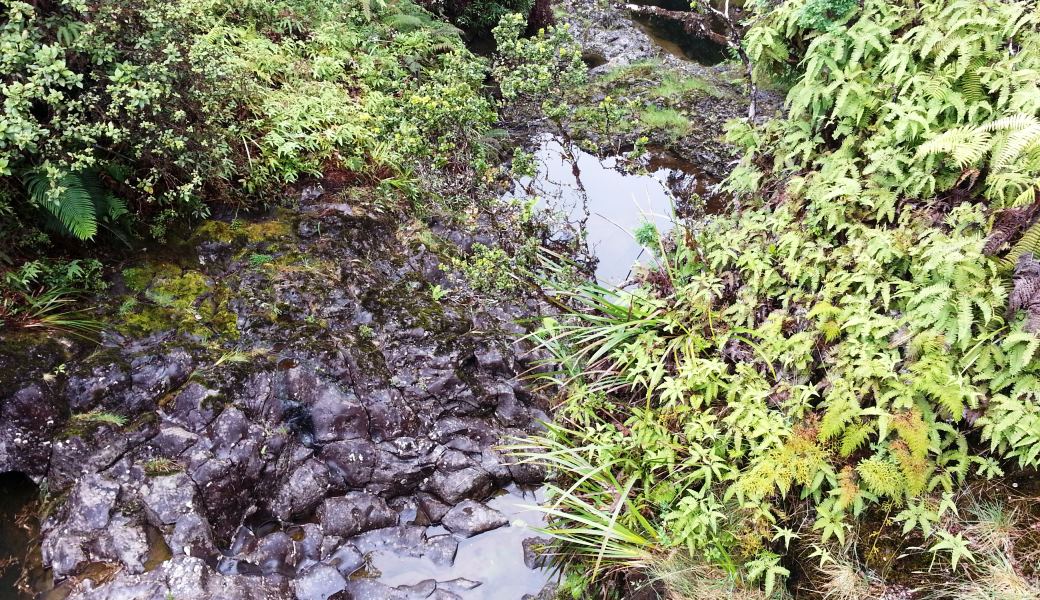Those who have read the landmark 2020 book, RECONOMICS: The Path To Resilient Prosperity know that most local revitalization initiates fail for lack of a complete process. The six essential elements of that process are program, vision, strategy, policies, partnerships and projects.
Communities might have a wonderful visioning session, or might write a lovely plan, or might launch a visionary project, but without the other elements of the renewal process, these activities often either go nowhere, or they don’t achieve their full potential.
One of the most common failures come in the area of creating or amending local policies to support the vision and strategy.
 In Hawaii, the County of Maui isn’t making that mistake.
In Hawaii, the County of Maui isn’t making that mistake.
They have adopted Ordinance 5421 to restore and conserve sensitive ecosystems and the natural environment, mitigate climate change, and work toward building environmental resilience by establishing a policy for wetlands restoration and protection in Titles 2, 18, and 19 of the Maui County Code.
As a first step in administering the ordinance, the Department of Planning has hired a consultant, H. T. Harvey & Associates, to prepare a wetlands overlay map.
Their team includes experts in wetland policy, Hawaiian wetland ecology, and mapping.
The University of Hawaii Sea Grant Program is also providing technical support as this project works to identify and map existing and future wetland areas in the County.
The overall goal of the project is to provide a more detailed picture of the County’s specific wetland resources to help guide property owners, land managers and County planners with land use decisions.
A comprehensive map of the County’s wetlands is an essential step to better preserve, protect and restore the islands’ important wetland ecosystems and the services they provide like flood prevention, pollution reduction, and endangered and threatened species habitat.
The wetlands overlay map will detail the approximate current location of wetlands throughout the County as well as potential future wetland areas as reflected by passive flooding data which incorporates the effects of climate change like sea level rise.
The map will also include environmentally sensitive areas such as isolated wetlands, estuaries, streams, and other waterways. The first area scheduled for mapping is South Maui.
There are various phases of the project that will include different levels of review from agencies, stakeholders and the public. After a first draft map is prepared, the consultant will reach out to Maui, Lana`i, and Molokai communities for feedback.
Then they will make revisions and post for public comment in approximately August – September 2023.
New Definitions added to Title 19, Maui County Code:
- Wetlands – those areas that are under normal circumstances (e.g., no filling or introduction of invasive plants) or were inundated or saturated by surface water or groundwater at a frequency and duration sufficient to support—and that under normal circumstances do support—a prevalence of vegetation typically adapted for life in saturated soil conditions. Wetlands generally include swamps, marshes, bogs, and estuarine systems; flowing, intermittent, or ephemeral streams and associated drainages; and similar areas: but do not include agricultural ditches or reservoirs.
- Overlay district – an area where certain additional requirements are superimposed upon a base or underlying zoning district and where the requirements of the base or underlying district Waikamoimay or may not be altered.
Toward the end of the public comment period, public scoping meetings will be held on Maui, Lana`i, and Molokai.
The purpose of community outreach is to ensure that ecologically and culturally significant wetlands are included in the mapping effort, and that local community knowledge is incorporated into the overly. It is important to note that the ‘final map’ is intended to be a “living document” that can continue to be improved and amended over time.
Photo of wetland courtesy of County of Maui.

